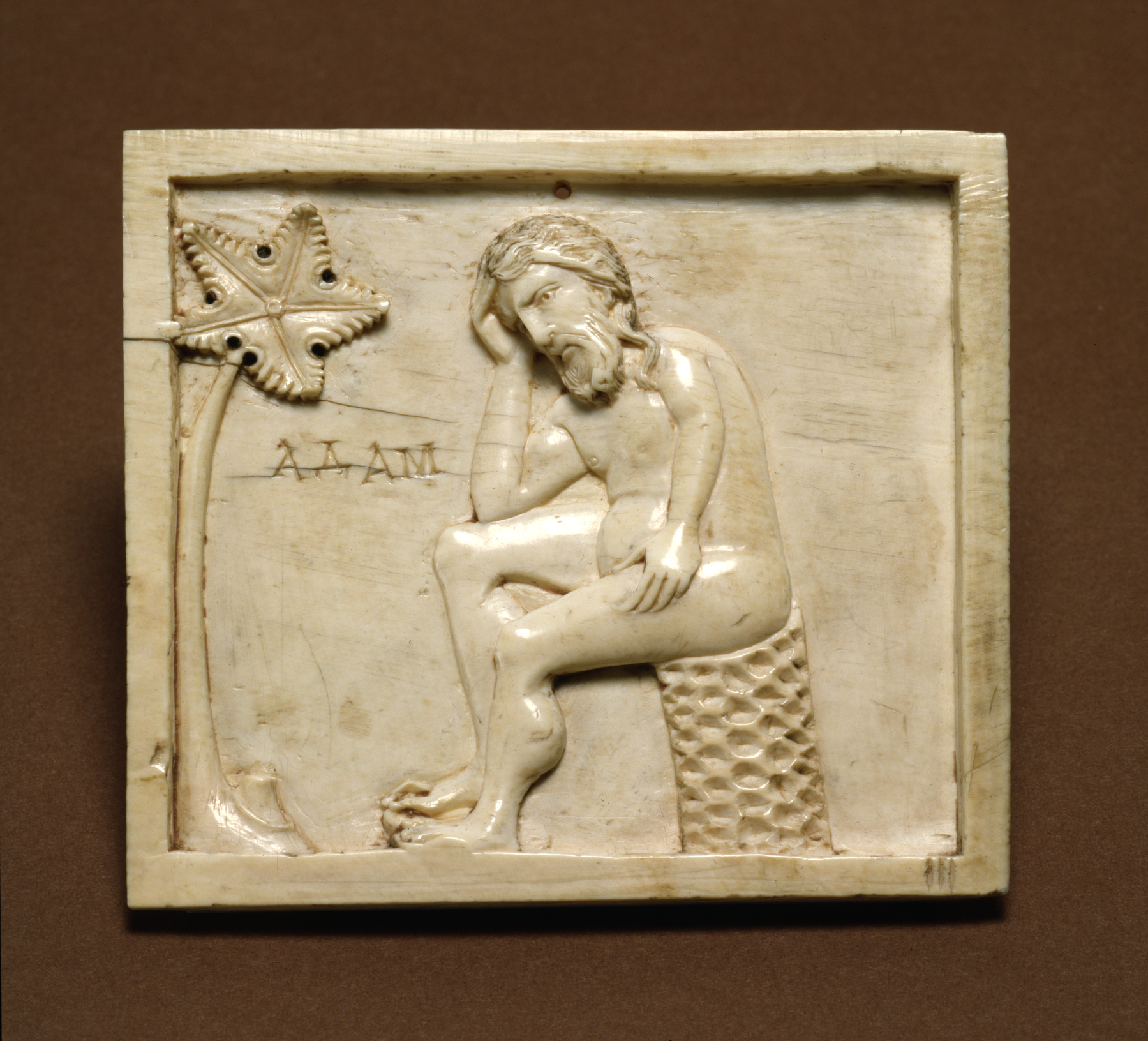Sorrowing Adam
This finely carved plaque comes from a casket or box similar to WAM 71.295. Adam, identified by an inscription, grieves over his expulsion from paradise. The pose of the figure, a traditional expression of sorrow, seems to echo the pose of a classical statue of Herakles (the Greek form of Hercules) that was still to be seen in the Hippodrome of Constantinople at the time when this plaque was carved. The image of Adam therefore illustrates how artists in Byzantium at times re-interpreted older, Classical models.
Inscription
Provenance
Provenance (from the French provenir, 'to come from/forth') is the chronology of the ownership, custody, or location of a historical object. Learn more about provenance at the Walters.
Count Auguste de Bastard, by purchase; Léon Gruel, Paris, by purchase; Henry Walters, Baltimore, 1926, by purchase; Walters Art Museum, 1931, by bequest.
Exhibitions
| 1997 | The Glory of Byzantium. The Metropolitan Museum of Art, New York. |
| 1947 | Early Christian and Byzantine Art. Baltimore Museum of Art, Baltimore. |
Geographies
Turkey, Istanbul (Constantinople) (Place of Origin)
Measurements
H: 2 3/4 x W: 3 1/8 x D: 5/16 in. (7 x 8 x 0.8 cm)
Credit Line
Acquired by Henry Walters, 1926
Location in Museum
Centre Street: Third Floor: Byzantine, Russian, and Ethiopian Icons
Accession Number
In libraries, galleries, museums, and archives, an accession number is a unique identifier assigned to each object in the collection.
In libraries, galleries, museums, and archives, an accession number is a unique identifier assigned to each object in the collection.
71.296


